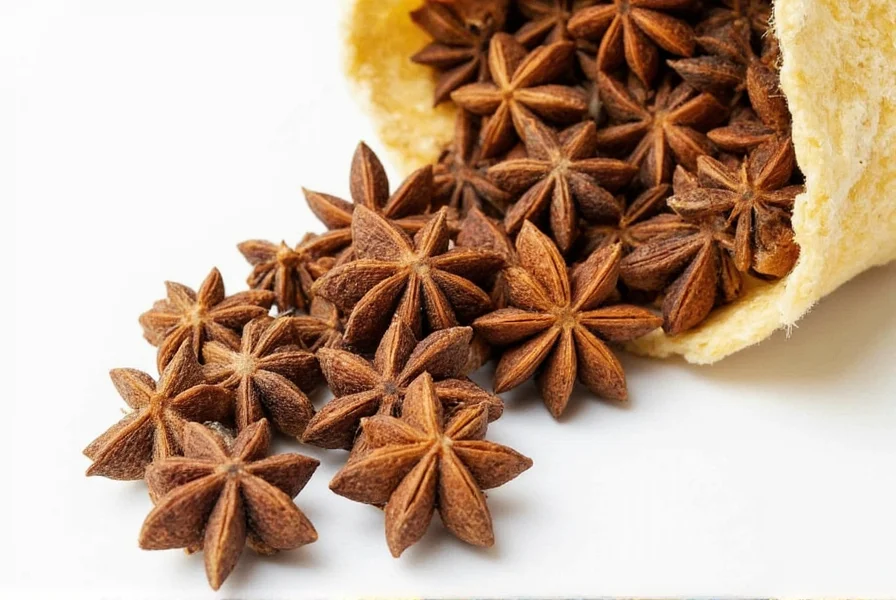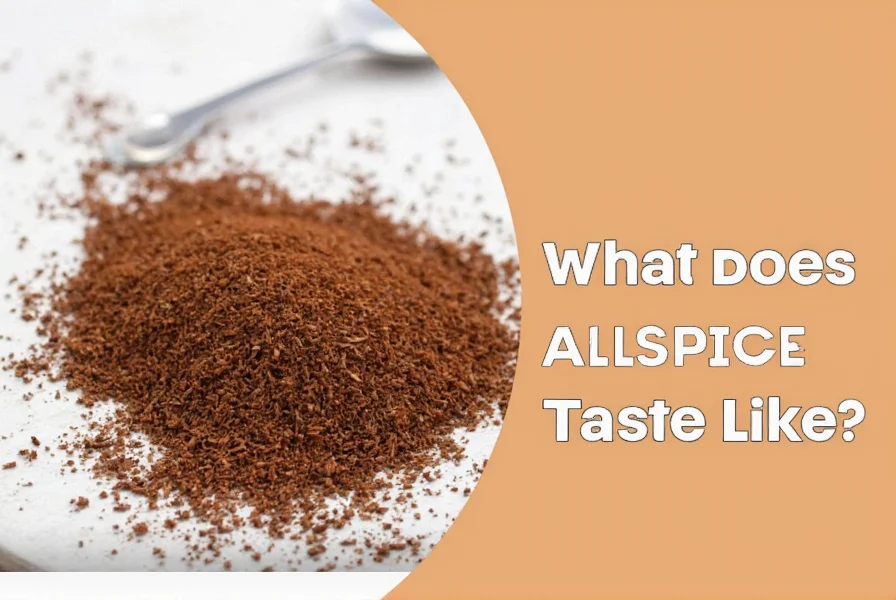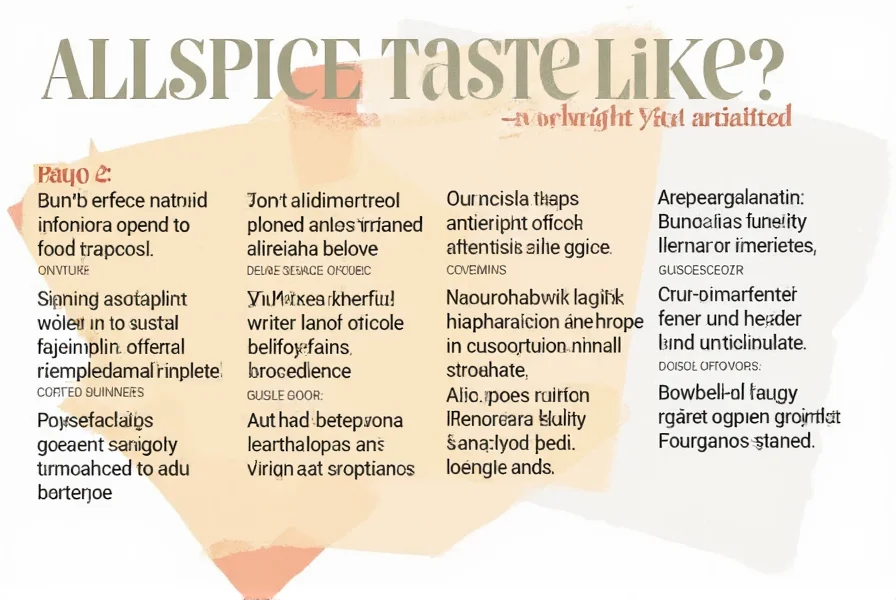Allspice earns its name from its remarkable ability to mimic the flavor profile of multiple spices in one. This single-ingredient wonder delivers a harmonious blend that has confused cooks for centuries into thinking they're tasting a spice mixture. Understanding what allspice tastes like requires examining its complex flavor components and how they interact in different culinary applications.
The Complex Flavor Profile of Allspice
When you taste allspice, you'll immediately notice several distinct flavor elements working together:
- Sweet warmth reminiscent of cinnamon
- Pungent notes similar to cloves
- Nutty undertones comparable to nutmeg
- Subtle heat that echoes black pepper
- Earthy depth with hints of juniper
This unique combination creates what food scientists call "flavor synergy"—where the whole tastes greater than the sum of its parts. The primary compound responsible for allspice's distinctive flavor is eugenol, which makes up about 70% of its essential oil content and gives it that characteristic clove-like aroma.
| Flavor Component | Intensity Level | Common Comparisons |
|---|---|---|
| Sweetness | Moderate-High | Cinnamon, brown sugar |
| Warmth | High | Nutmeg, mace |
| Pungency | Moderate | Cloves, star anise |
| Heat | Low-Moderate | Black pepper, cardamom |
| Earthy Notes | Moderate | Juniper, bay leaf |
How Allspice Differs from Mixed Spices
Many people wonder what does allspice taste similar to and whether it's the same as pumpkin pie spice or mixed spice. While commercial spice blends attempt to recreate allspice's flavor, genuine allspice has a more integrated, balanced profile. Unlike mixed spice blends where you can detect individual components, allspice offers a seamless fusion where no single flavor dominates.
The confusion about allspice vs mixed spice difference stems from historical usage. In 17th century England, allspice was marketed as "myrtle pepper" and later "allspice" because it seemed to contain all spices. This naming convention persists despite modern understanding that it's a single berry.
Culinary Applications and Taste Experience
Understanding what gives allspice its unique flavor becomes clearer when examining how it behaves in different dishes:
In Sweet Applications
When used in baking, allspice contributes warm sweetness without overwhelming the dish. In gingerbread or spice cakes, it enhances other flavors while adding depth. The allspice taste in baking recipes manifests as a background warmth that makes sweet dishes more complex without being spicy.
In Savory Dishes
In jerk chicken, stews, or pickling solutions, allspice reveals its peppery side. The heat becomes more pronounced while the sweet notes mellow, creating a perfect balance in savory applications. This dual nature explains why Caribbean cuisine uses it so extensively in both sweet and savory preparations.

Factors That Influence Allspice Flavor
Several elements affect how allspice tastes in your dishes:
- Form: Whole berries retain flavor longer but release it slowly; ground allspice delivers immediate flavor but loses potency faster
- Freshness: Properly stored whole allspice maintains peak flavor for 3-4 years; ground spice lasts 6-12 months
- Heat exposure: Adding allspice early in cooking mutes its heat while enhancing sweetness; adding it late preserves more peppery notes
- Acidity: In tomato-based dishes, allspice's sweetness becomes more pronounced
Substituting Allspice: Understanding Flavor Equivalents
If you're wondering what does allspice taste like when substituted, here's how common alternatives compare:
- Cinnamon + Cloves + Nutmeg (1:¼:¼ ratio): Closest approximation but lacks the subtle heat
- Pumpkin Pie Spice: Sweeter and less complex; missing the peppery element
- Five-Spice Powder: More licorice notes with less warmth; different flavor balance
- Apple Pie Spice: Too sweet and cinnamon-dominant; lacks depth
For the most accurate allspice substitute taste comparison, use ½ teaspoon cinnamon, ⅛ teaspoon cloves, and ⅛ teaspoon nutmeg to replace 1 teaspoon of allspice. This blend captures the primary flavor components but won't replicate allspice's unique integrated profile.

Proper Storage for Optimal Flavor
To maintain allspice's distinctive taste profile, store it properly:
- Keep whole berries in an airtight container away from light and heat
- Grind only what you need for immediate use (pre-ground loses 40% of flavor compounds within 6 months)
- Store in a cool, dark place (not above the stove where heat degrades flavor)
- Check freshness by crushing a berry and smelling for strong aromatic notes











 浙公网安备
33010002000092号
浙公网安备
33010002000092号 浙B2-20120091-4
浙B2-20120091-4